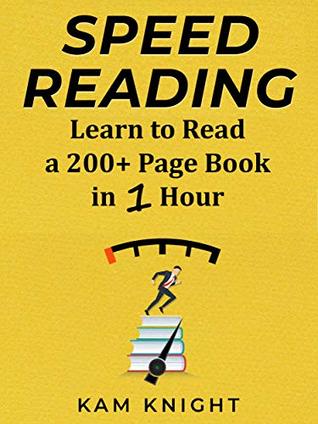More on this book
Community
Kindle Notes & Highlights
by
Kam Knight
Read between
March 16 - March 16, 2022
While reading, stop at some point and recall what you just read or learned up to that point. You can stop either every half hour or so, or stop every chapter, lesson, or subsection.
It is important that the content is recalled from memory rather than looking at notes or going back to the material[27] [28]. Allow the information to come to mind on its own without relying on anything else.
A great time to practice recall and review is after returning from breaks. When you return to a book after putting it down, quickly recall what you read so far, before moving ahead. For example, if you read two chapters of a novel during the morning commute, the next time you pick up the novel, take a minute to review what you read that morning before reading further. Doing so will not only refresh memory of the previous material but segue smoothly into the new content.
Recall and review is especially useful at the end. After finishing a book, article, or any other piece of writing, take a moment to reflect on it. Try to recall as much as possible, and when you can’t recall anything further, quickly review the material to ensure that what you recalled is accurate and complete. This will cement the information into long-term storage.
If a book takes a week to finish, and throughout the week, you take a few moments to regularly recall the material, your memory and comprehension will be far greater than if you read the book two or even three times. Information won’t disappear like it does for so many others.
Do not wait until the sentence, paragraph, or passage ends to begin visualizing—simply allow the two activities to occur simultaneously. Also, do not stop at each sentence to complete the image, but move from sentence to sentence, forming images along the way.
For additional sentences, please visit: mindlily.com/speedreadingsentences
Once you’ve practiced on randomly generated words, phrases, and sentences, the next step is to practice with works of fiction, such as novels or poetry. These types of works tend to be highly descriptive, which translate easily into visual images. In fact, such literature naturally lend itself to being visualized. Images will automatically appear, like a movie, right in your head and all you have to do is allow them to form as you read.
If reading about plants, visualize the process plants use to convert sunlight into energy or the route water travels from a plant’s roots through the stem and up to its leaves and buds. As additional information is provided, insert it into the mental movie.
The goal is to get to a level where reading a sentence automatically triggers a visual image or sequence.
Instead of passively absorbing information, you are actively involved, and at times, even experiencing the material firsthand.
Second, visualization enhances memory. As explained, vision is our dominant sense and the majority of the brain’s power is used to process visual information. This applies to memory as well. It’s much easier to remember pictures than words. Many of our strongest memories are of visual experiences.
Finally, and most importantly, visualization aids comprehension. We’ve all heard the maxim a picture is worth a thousand words. That’s because pictures are the language of the mind. Seeing something goes a long way to understand it, much more than merely reading or hearing about it. If you can translate words into images, your comprehension of written material will fly through the roof.
It helps to direct vision on an object about 20 feet away. If you like, gaze out the window. Maintain that focus anywhere from 20 seconds to 2 minutes. Refrain from moving your eyes during that time as doing so defeats the purpose of the exercise. Simply focus attention on an object in the distance.
Repeat the exercises at least once a day. You don’t have to do every exercise every day, but choose one or two for each session. I do one exercise first thing in the morning and another before going to bed. Throughout the day, I do them as needed to relieve and refresh my eyes. If you do the same, you’ll find that your eyes will feel stronger and better equipped for the constant stream of text that they encounter on a daily basis.
If you remember, Chapter 13 discussed the importance of recall and review. If no action is taken to remember what was read, the majority of it will be forgotten within a few hours. All that will remain is a feeling that you remember the information.
Do your best to recall as much as possible. Recall deepens the neural pathways to memories stored in the brain. The more you recall a fact, the deeper those pathways become, and the longer you are able to hold on to them. So, work really hard to recall everything. The more of the lessons you can recall in this moment, the longer it will stick, which means the more you will remember to put into practice.
An excellent way to aid recall is to think about information related to or discussed in close proximity to what you can remember.
With the memory of the lessons strong, it’s time to put the information and techniques to use. Choose a chapter and focus on developing the skill taught in that chapter. It’s not necessary to do this in order—begin
practice is essential for integrating the techniques into your reading routine. Otherwise, the moment you pick up a book, old habits take over.


